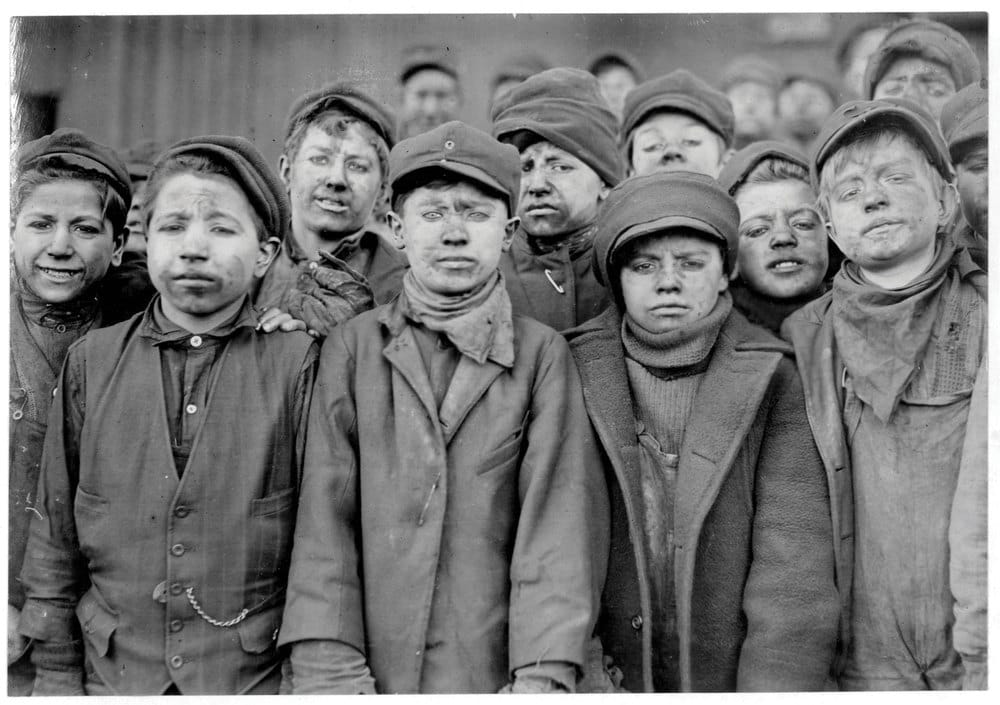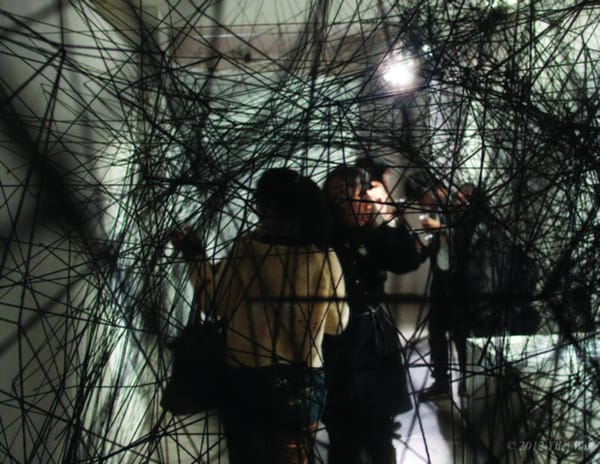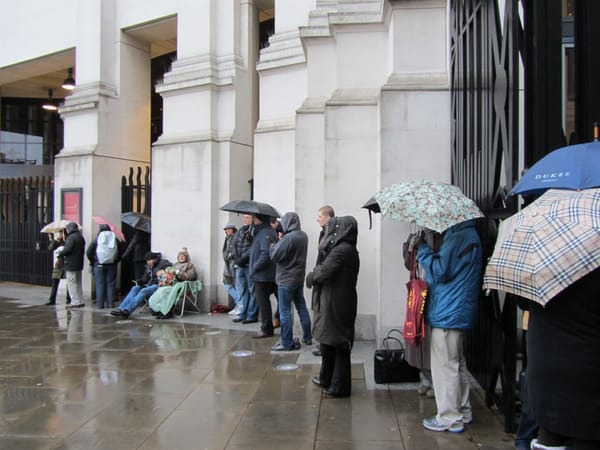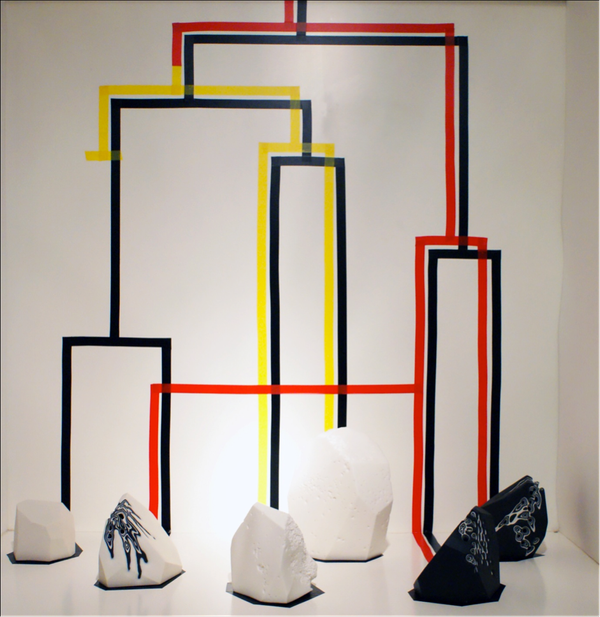Great Expectations?
Joseph Kaupp on Dickens and his (perhaps misunderstood) views on the Industrial Revolution

The Dickens exhibition at the Museum of London contrives a fair representation of the city in the 19th century, allowing us to walk the very streets that Dickens himself traversed, and through which he invented a score of enduring characters that relate to readers even today. London of the mid-1800s is more than just the backdrop of Dickens’ stories. It is a central character itself in his works, rhythmically vacillating between protagonist and antagonist. As the exhibition guides us through the chronology of the author’s work, we cannot help but bear witness to the dramatic transformations of London life. From Sketches by Boz to Our Mutual Friend, the city matures just as much as its revered biographer. Among the characters and alongside the plotlines, we find ourselves in the midst of the Industrial Revolution.
In one particular exhibit, we are informed – by virtue of some anonymous scholar – that Dickens was optimistic about the type of society that industrialization could usher in. It is explained that he held great hope for the potential benefits that technological advancement offered society. This is in stark contrast to many other scholastic writings about Dickens’ attitude towards industrialization. Many academics cite Oliver Twist and Hard Times (among others) as unmistakable condemnations of the shifting society. But these – perhaps prematurely – fuse Dickens’ views with those who outright opposed industrialization and the hellfire and brimstone perceptions of the type of world that innovations in productive capacity would bring. (Such apocalyptic attitudes are perhaps most vividly allegorized in J.R.R. Tolkien’s descriptions of Mordor).
Although his work frequently spotlights the cruel indifference of modern life, we too are made known of Dickens’ resilient hope for the future. He was even once referred to as a “vulgar optimist.” Despite this apparent contradiction, we can be certain of one thing: sordid or sublime, Dickens managed to illustrate his surroundings with a unique vitality. The stale pubs, debauched gin houses and wretched pawn shops were all painted with a peculiar stroke of charm that was at once full of squalor and liveliness – something which seems to have been a prevailing characteristic of 19th century London. So, how can his optimism be reconciled with the apparent wrongs about which Dickens wrote? Consider Adam Smith in The Wealth of Nations:
“The violence and injustice of the rulers of mankind is an ancient evil, for which, I am afraid, the nature of human affairs can scarce admit of a remedy. But the mean rapacity, the monopolizing spirit of merchants and manufacturers who neither are, nor ought to be, the rulers of mankind, though it, perhaps, cannot be corrected, may very easily be prevented from disturbing the tranquility of anybody but themselves.”
It is perhaps wrong to say that Dickens outright opposed industrialization and the productive innovations it spawned. But his aversion towards the “mean rapacity” and heartless greed of the owners of production and their cruelty – especially towards children – is unmistakable. Bleak House and capture especially well Dickens’ reservations for many of the contemptible practices that prevailed during industrial times. It may have been his intention to prevent the merchants and manufactures from “disturbing the tranquility of anybody but themselves,” although to say that Dickens opposed industrialization in itself may be painting with too broad a brush. Conversely, to claim that Dickens was optimistic about modernity, full stop, neglects a great many reservations I suspect he had about the changing times – amongst them the changing face of his beloved city. This was perhaps a more certain and inevitable effect of industrialisation. In fact, it is interesting to read Dickens’ thoughts on one innovation in particular – the railroad. Dickens was said to have been at two minds about the railroad system. He submitted to their facilitation of modern obligations, but he also feared that they would break apart neighbourhoods and families, attributes of the communal spirit about which he often wrote.
His reservations about the metamorphoses that London was undergoing are apparent. On one hand, there is the Dickens who was hopeful for the potential benefits of industrialization. On the other hand, there is the Dickens who saw its potential side effects: both the avarice of the monopolising spirit, and the gradual extinction of many of the cherished charms of the city (some of which are now on display in the exhibition). Although in part a boon to society, industrialization had its drawbacks—it threatened the quaint, but susceptible character of the city that Dickens so admired.
There is a theme of resistance weaved throughout the history of innovation. Google the societal context of a given breakthrough innovation and you will most likely find some sort of backlash. A dramatic example of resistance to change is the scientific dark ages, when thinkers and innovators were burned at the stake for rattling the comfortable world-view of society (and, of course, for threatening the reallocation of power). But less extreme examples abound, such as the resistance to the spinning jenny, or to Darwin’s theory of evolution.
So, we return again to our question: how do we explain Dickens’ mixed-feelings about the changes taking place in his era? Ben Franklin said upon ratifying the constitution: “there are several parts…about which I do not at present approve, but I am not sure I shall never approve them.” My suspicion is that Dickens had a similar ambivalence towards the innovations of his day—hopeful for the future, but hesitant about marching without reflection into a brave new world.
Today we similarly must wonder about the seeds of change being sown by the information revolution. What are the trade-offs associated with a “better” society? The Kindle is a brilliant improvement – economically and environmentally – to the age-old book; however, it also means the extinction of notes in the margins, and small second hand bookshops – such things that, by untold powers, manage to transport us back in time to another place, another age.
Woody Allen’s latest film Midnight in Paris deals with a similar theme. Gil, the protagonist, has romantic fantasies of Paris in the 1920’s. He envisions narrow alleyways and small cafes humming with jazz and rife with musicians, artists and writers from all around the world. Allen calls it golden age thinking. Gil struggles with the trade-off between the charm of the past and the utility of the future. Paris of the past has Maxim’s, streetcars, and candle-lit alleyways, but what they don’t have is e-mail, electricity, and antibiotics. Since the advent of the information revolution we have seen the birth of the Internet, the television, the phone, the mobile phone, the hands-free phone, Skype, the iPod, YouTube, cars that can park themselves, and – arguably more significantly – a score of new vaccines. We’ve reached Mars and even managed to increase the average life expectancy to nearly 80 years in most developed countries.
However, the sustainability of the things that matter to us is inevitably questioned by innovation. These are different things for different people. For me it is vinyl records and old cinemas. For my father it is the Sunday edition of the morning newspaper. For my grandmother I suspect it has something to do with the cordial chitchat between her and the postman. But these are only incidental charms on an individual scale. What about those larger things that matter so much to so many? Is religion sustainable in the face of scientific discovery? When subjected to the rigor of the scientific method, do the foundations on which so many faiths are based maintain their integrity? How about those whose doctrines specifically preclude the possibility of evolution—an idea whose certainty is imminent? How about our privacy? Yes, we will probably get healthier and live longer. Root canals, prostate exams and other unsavory medical probings will become less uncomfortable. Our world is getting better, but we have to wonder, what are the trade-offs? If only Dickens were here to give his view of our own changing modern times.
The Dickens Exhibition at the Museum of London is on display until June 2012.







